Qualcomm Snapdragon 805 Performance Preview
by Anand Lal Shimpi on May 21, 2014 8:00 PM EST- Posted in
- Tablets
- Snapdragon
- Qualcomm
- Mobile
- SoCs
- Snapdragon 805
GPU Performance
3DMark
Although it's our first GPU test, 3DMark doesn't do much to show Adreno 420 in a good light. 3DMark isn't the most GPU intensive test we have, but here we see marginal increases over Snapdragon 800/Adreno 330. I would be interested in seeing if there are any improvements on the power consumption front since performance doesn't really change.
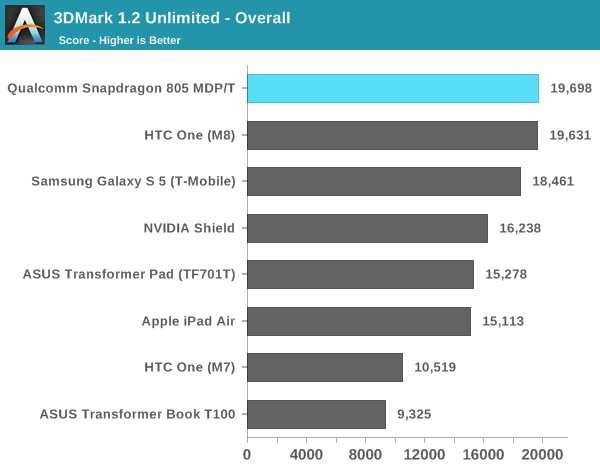


Basemark X 1.1
Basemark X 1.1 starts to show a difference between Adreno 420 and 330. At medium quality settings we see a 25% increase in performance over the Snapdragon 801 based Adreno 330 devices. Move to higher quality settings and the performance advantage increases to over 50%. Here even NVIDIA's Shield with Tegra 4 cooled by a fan can't outperform the Adreno 420 GPU.
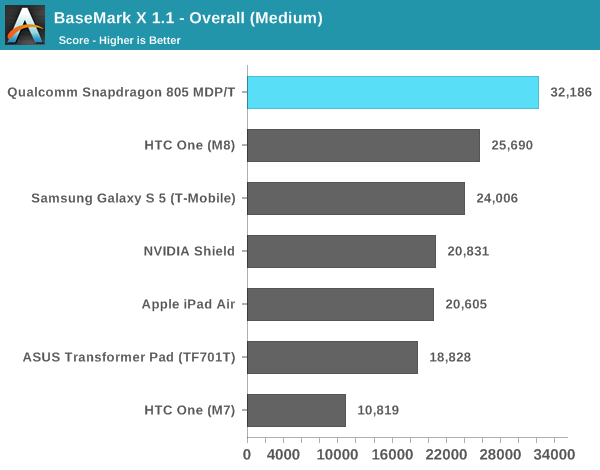
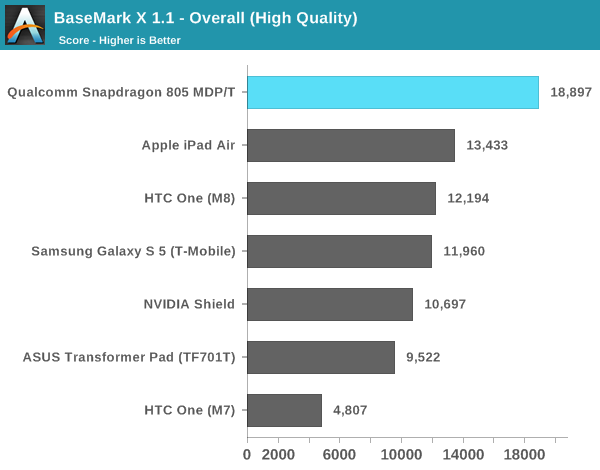
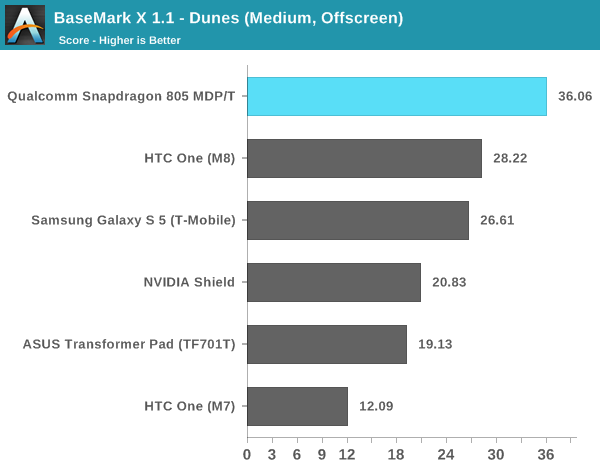
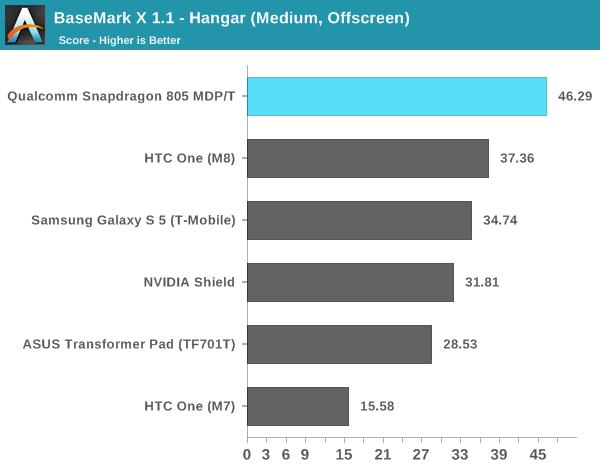


GFXBench 3.0
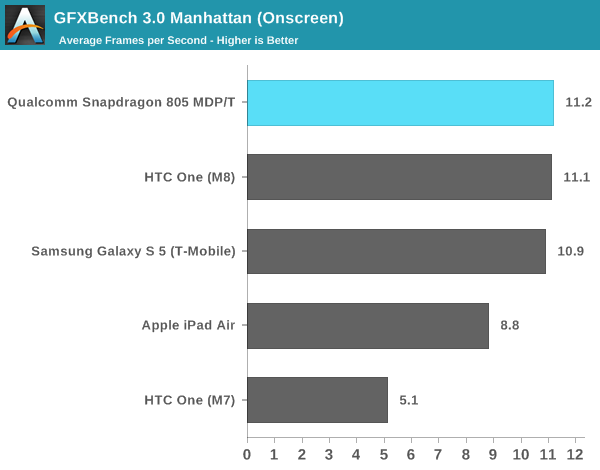
Manhattan continues to be a very stressful test but the onscreen results are pretty interesting. Adreno 420 can drive a 2560 x 1440 display at the same frame rate that Adreno 330 could drive a 1080p display.
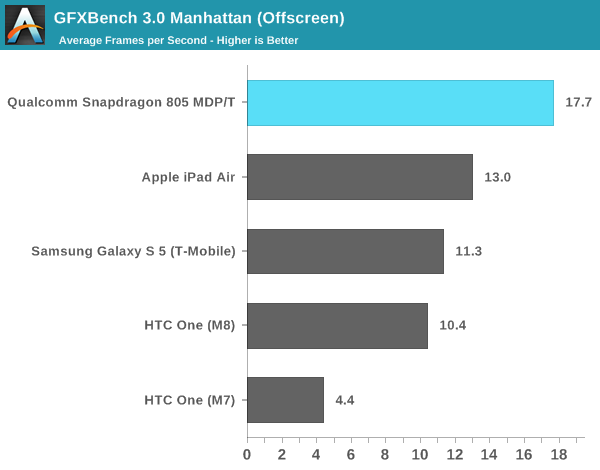
In an apples to apples comparison at the same resolution, Adreno 430 is over 50% faster than Adreno 330. It's also faster than the PowerVR G6430 in the iPad Air.
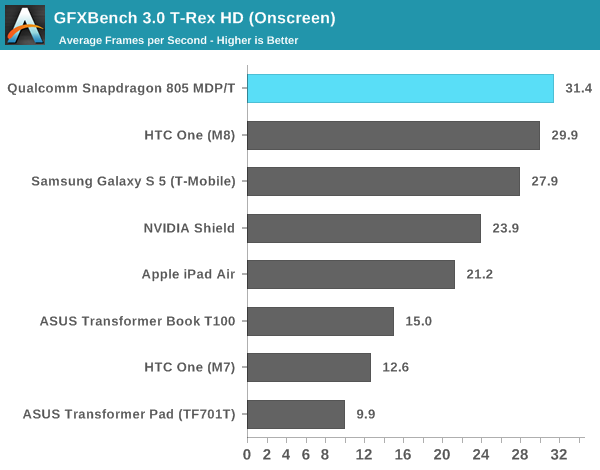
Once again we see an example where Adreno 420 is able to drive the MDP/T's panel at 2560 x 1440 at the same performance as Adreno 330 can deliver at 1080p
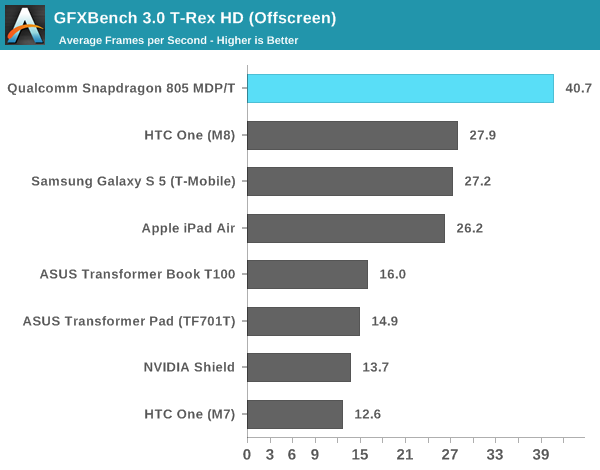
At 1080p, the Adreno 420/S805 advantage grows to 45%.
I've included all of the low level GFXBench tests below if you're interested in digging any deeper. It's interesting that we don't see a big increase in the ALU test but far larger increases in the alpha blending and fill rate tests.
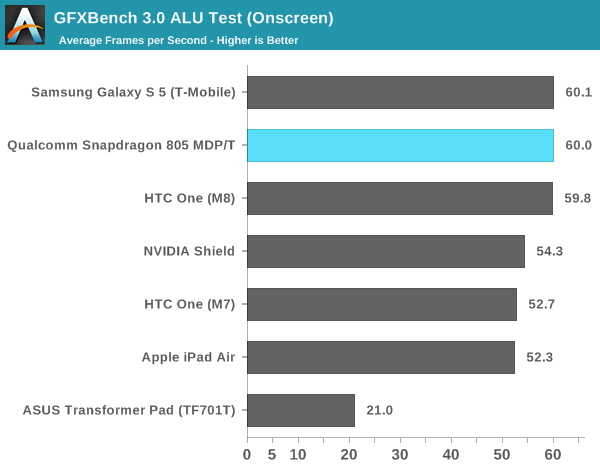
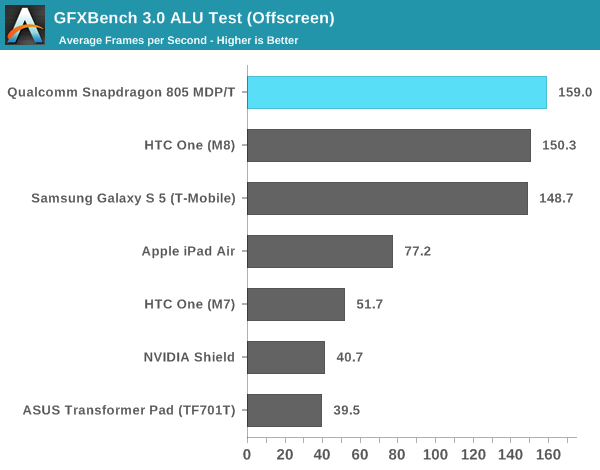
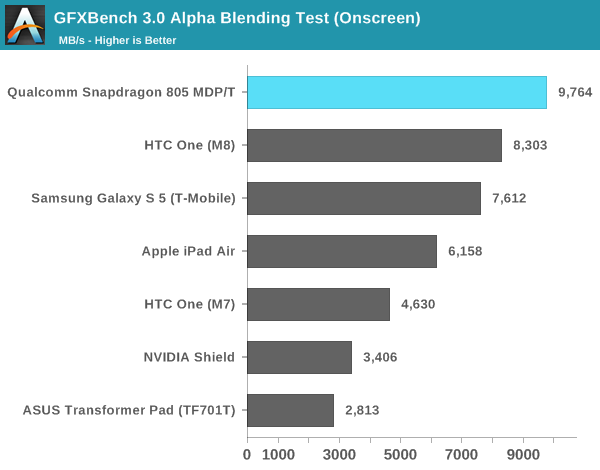

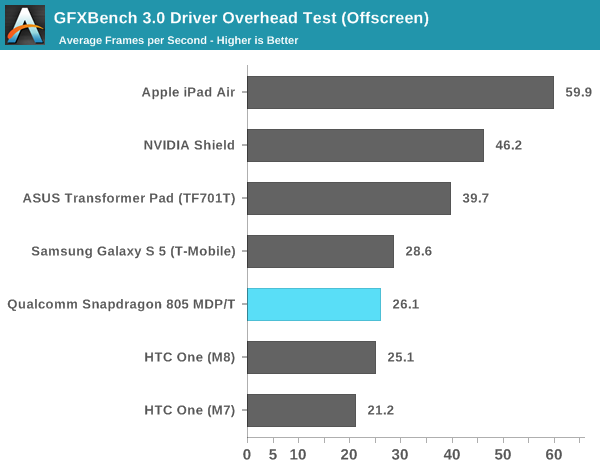
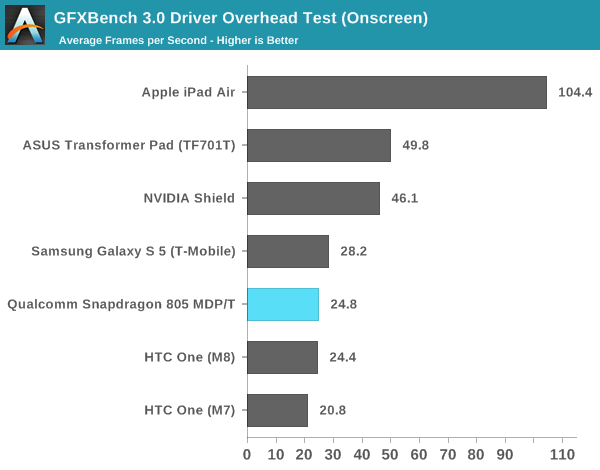
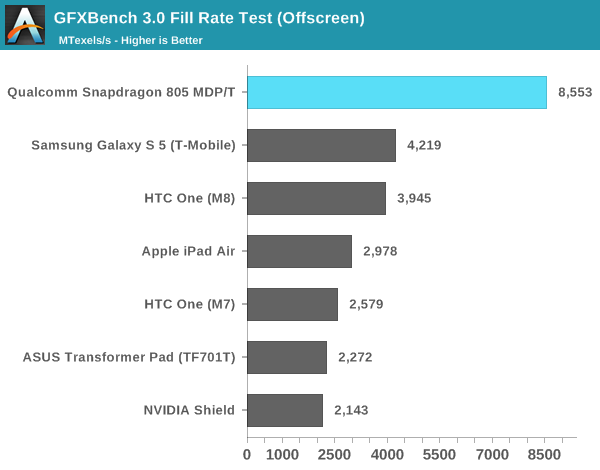
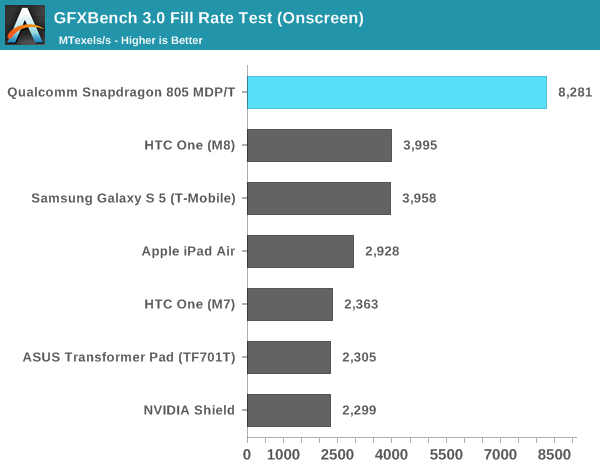










149 Comments
View All Comments
bradleyg5 - Thursday, May 22, 2014 - link
http://imgur.com/a/fkUhfCharts!
phoenix_rizzen - Friday, May 30, 2014 - link
Broken links!hardeswm - Thursday, May 22, 2014 - link
Anand,Would you consider including at least 1 Intel/AMD 'cost-effective' cpu, integrated graphics, and 'cost-effective' discrete gpu in these charts? A price per chip comparison would be very cool as well.
I am really interested in watching the performance gap close over the next year.
Thanks!
texasti89 - Thursday, May 22, 2014 - link
Nice GPU features & moderate performance bump. Not impressive, though. This release shows how bad we need to migrate to the next 20nm process node. Industry has done all they can to squeeze the heck out of current 28nm node. It's really frustrating to observe this stagnation of process technology.
rocketbuddha - Thursday, May 22, 2014 - link
IMHO, I do not think 805 will get much in the area of phones. Manufacturing wise it is more expensive. It needs to have a separate Gobi MDM to provide LTE connectivity. Instead the cheaper integrated 800/801 which are MSMs will continue to be used.IT could very well be a repeat of Q3-12-Q2-13 where in when the first QC Kraits appeared sans the integrated baseband.
That was a brief window of time that Note 2 as well as HTC One X+ sported Exynos and Tegra 3+ variants as the SOC and plus a Gobi MDM for LTE connectivity. So maybe Note 4 would have the next Exynos version with the Gobi MDM for the US version of the handset.
Tanclearas - Thursday, May 22, 2014 - link
Is that really correct that Snapdragon 808/810 will revert back to 2 x 32b memory interface? That doesn't seem right.frostyfiredude - Thursday, May 22, 2014 - link
810 is 2x32b LPDDR4 1600. 25.6GB/s, same as 805808 is 2x32b LPDDR3 933. 14.9GB/s, less than the others but still quite a lot of BW considering the GPU is smaller too.
Tanclearas - Friday, May 23, 2014 - link
The combination of a new 64-bit core and higher clocked GPU (note that the 810 shows Adreno 430) will put additional strain on the memory bandwidth. I think I'd rather see 4x32b LPDDR3 933.frostyfiredude - Friday, May 23, 2014 - link
Considering the hugely more powerful APUs from AMD and Intel are happy with 25.6GB/s using architectures which are less bandwidth conscientious; I'm sure these Snapdragons will be limited by thermals far before memory.vortmax2 - Thursday, May 22, 2014 - link
Bring on the Note 4 with this!